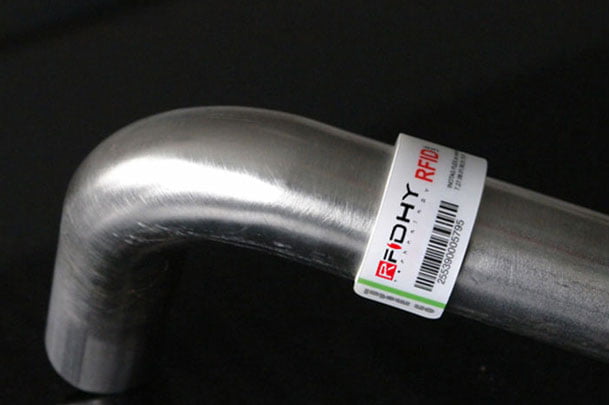As flexible foam anti-metal labels are gradually accepted by the market, how to choose flexible metal inhibitory labels has become a particular concern for users. In order to help users better choose flexible RFID anti-metal tags, here are the following successful experiences:
 1. Select the type of label that matches the printer (encoder). The type of label selected must match your printer (encoder) and application environment. This is the key to the successful application of RFID flexible anti-metal labels. Data transmission rate, memory, antenna design, tag writing function, etc. all need to be evaluated to ensure that the tag can work normally. Some label suppliers may also have different specifications, or add some patented application-related or irrelevant functions. At this time, you should ask the supplier to recommend the most suitable flexible anti-metal label for your application.
1. Select the type of label that matches the printer (encoder). The type of label selected must match your printer (encoder) and application environment. This is the key to the successful application of RFID flexible anti-metal labels. Data transmission rate, memory, antenna design, tag writing function, etc. all need to be evaluated to ensure that the tag can work normally. Some label suppliers may also have different specifications, or add some patented application-related or irrelevant functions. At this time, you should ask the supplier to recommend the most suitable flexible anti-metal label for your application.
2. Perform a small batch test before ordering RFID UHF electronic tags in large quantities. Before you are ready to order customized UHF electronic tags, you must obtain the requirements for the location of the transponder (ie RFID tag) from your printer (encoder) manufacturer. In the sample test or small batch test stage, these labels must be able to fully meet your application needs, and then decide whether to order in large quantities.
3. The storage temperature of the RFID tag should be appropriate, its storage temperature should be between -60 to 203 degrees Fahrenheit (15.5 to 95 degrees Celsius), and the environmental conditions should be stable. Do not expose the label to an environment with static electricity, otherwise it will affect the performance of the label. When applying RFID UHF electronic tags in a low-humidity environment, it is best to use an anti-static cloth or an anti-static mat to eliminate the effects of static electricity.
4. Train employees to make label printing a success. The label printer (encoder) has many parameter settings for your use environment, with its own characteristics and special RFID technical requirements. The employees must be fully trained in advance to avoid possible errors in RFID label printing.
5. Correct the label printer (encoder) to ensure correct printing. Before the label starts printing, adjust the printer (encoder) to ensure that the label roll has the correct guiding gap and pitch (the distance between the two labels) in the printer (encoder). For each new batch of label tape, it must be adjusted once before printing. If it is a special label printer, and the parameters and gaps have been set, this calibration operation can be eliminated. Some label printers (encoders) have an automatic correction function, and the correction operation will be simpler.
As for the choice of RFID flexible anti-metal tags, it has become an annoying thing for most people, especially for companies that require specific special needs for work in special environments.
RFIDHY specializes in the production of RFID flexible anti-metal tags. It has rich experience in flexible anti-metal tags of different sizes and different standards (such as American Standard, European Standard, etc.), and supports customization and has a relatively high cost performance.





